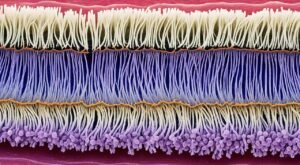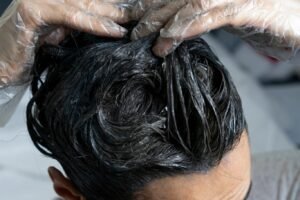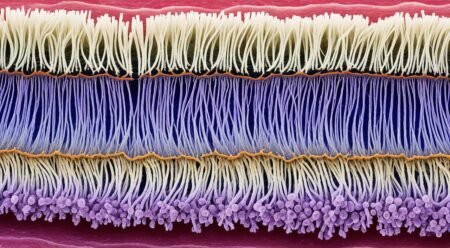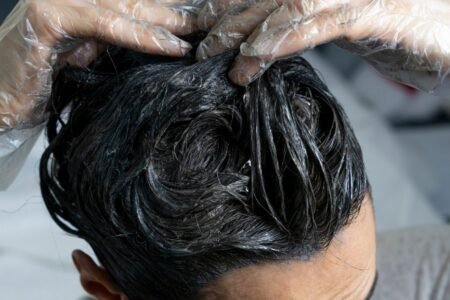The wise philosopher Seneca once said, “If you wish to be loved, love.” But embracing love often begins with how we perceive and feel about ourselves. Hairstyles and health are woven into the fabric of our self-esteem, influencing the love we can harbor for our own reflections. In the journey toward self-affirmation, hair transplant surgery benefits reveal a deeper narrative — one of restoration, not just of hair, but of confidence.
Imagine looking in the mirror and the reflection radiates the version of yourself you’ve always aspired to see. Hair restoration advantages bridge the gap between your inner vitality and outer appearance. You no longer simply ‘get by’ with temporary solutions; you seek lasting hair transplant results that echo permanence and self-belief.
Whether spurred by the natural evolution of time or the unpredictable cards dealt by genetics, thinning and loss can leave a void where vivacity once flourished. But here lies an opportunity — a chance to boost confidence with hair that serves as a crown you never take off. This article is your guide to understanding not just the aesthetic transformation hair transplant surgery promises, but the profound psychological uplift that invariably follows.
The Basics of Hair Transplant Surgery
Embarking on a hair transplant procedure can be a transformative experience. As you explore the options available, understanding the intricacies of the process becomes paramount. Hair transplant surgery, regarded as one of the best hair transplant solutions available, meticulously moves hair follicles from a donor area—often the back of the head—to the regions experiencing hair thinning or baldness.
Choosing a skilled hair transplant doctor is critical, as they bring to the table not only their expertise but also the technological advancements necessary for a successful procedure. The clinics that offer the best hair transplant services are equipped with state-of-the-art technology to ensure natural-looking results and minimal discomfort during the procedure.
Why Consult with a Hair Transplant Clinic?
- Assessment of your hair loss pattern and donor area viability
- Professional advice on the best treatment plan tailored to your needs
- Access to cutting-edge hair transplantation technologies
- Understanding the aftercare and long-term outcomes of your procedure
As technology and techniques evolve, the hair transplant clinic you select should stay at the forefront, offering you updated and refined procedures. This continuous advancement in the field contributes to higher success rates and enhanced patient satisfaction.
Remember, your journey with a hair transplant clinic is not just a day’s procedure, but a partnership toward achieving your desired aesthetic and renewed self-confidence.
Consider this journey as a step towards not just the restoration of your hair but also the reclaiming of your self-image and the confidence that comes with it.
Comprehensive Overview of Hair Restoration Procedures
As you delve into the intricate world of hair restoration, you’ll discover a range of hair transplant techniques designed to bring back your natural hairline and the youthful look associated with a full head of hair. The technological advancements in the field have led to the development of methods like Follicular Unit Extraction (FUE) and Follicular Unit Transplantation (FUT), each with unique benefits tailored to meet diverse needs and preferences.
Types of Hair Transplant Techniques
Two prominent procedures stand out in the realm of hair transplant techniques: FUE and FUT. Both procedures are highly effective but differ in approach and execution, offering options for patients based on their specific hair restoration requirements.
Understanding Follicular Unit Extraction (FUE)
FUE is a meticulous procedure that involves extracting individual hair follicles from a donor area of your scalp and strategically transplanting them to areas affected by thinning or baldness. This technique is favored for its less invasive nature and ability to leave virtually no noticeable scars in the donor area, allowing for a quick return to everyday activities.
Benefits of Follicular Unit Transplantation (FUT)
FUT, on the other hand, involves removing a strip of skin with healthy hair follicles from the back of the scalp and then dissecting it into individual grafts for transplantation. This method is ideal for covering larger areas of hair loss in a single session and is noted for achieving comprehensive and natural-looking results.
| Criteria | Follicular Unit Extraction (FUE) | Follicular Unit Transplantation (FUT) |
|---|---|---|
| Scarring | Minimal, tiny dots | Linear scar hidden by hair |
| Procedure Length | Longer, multiple sessions may be needed | Shorter, often completed in one session |
| Recovery Time | Quicker, less downtime | More recovery time, but quick healing |
| Best for | Small areas, detailed work | Significant hair loss, more extensive coverage |
While these hair restoration procedures differ, they both require a skilled hand and an artistic eye to achieve the most natural-looking results. Whether you’re considering FUE or FUT, you should seek consultation with a renowned hair transplant specialist to determine the most suitable approach for your hair restoration journey.
Identifying When You Need a Hair Transplant
Facing hair loss can be daunting, and while searching for hair loss solutions, the question of when to get a hair transplant frequently surfaces. It’s not just about the availability of a hair transplant near me but understanding the right timing for this life-changing decision.
Several individual factors contribute to this decision-making process:
- Your degree of hair loss and its progression
- The density and quality of your donor hair
- Age and potential future hair loss
- Overall health and suitability for surgery
Confronting these considerations is best done through a personal consultation with a hair transplant specialist. They will guide you through evaluating your situation and exploring viable hair loss solutions.
| Factor | Consideration | Impact on Decision |
|---|---|---|
| Age | Younger patients may experience more hair loss over time. | May necessitate a strategic approach to transplant planning. |
| Degree of Hair Loss | Extensive hair loss often requires larger transplants. | Influences the number of grafts and sessions required. |
| Hair Type | Certain hair types and colors offer more natural-looking results. | Affects the complexity and technique of the procedure. |
| Donor Hair Density | The amount of available donor hair limits or enables transplant options. | Key factor in determining the feasibility of the transplant. |
Remember, advancing beyond the preliminary online search for a hair transplant near me and engaging with professionals will provide you with a nuanced understanding of your personal hair restoration path.

Bearing in mind your long-term hair restoration goals, an expert can offer a tailored approach, ensuring that the timing of your procedure aligns with the optimal outcome for you. Take your first step towards a fuller head of hair by scheduling a consultation with a trusted clinic, and discard the guesswork in your quest for effective hair loss solutions.
Hair Transplant Surgery Results to Expect
Delving into the world of hair transplants, one may wonder about hair transplant results. Unlocking the potential of this life-altering procedure starts with examining real transformations that serve as testaments to its efficacy. Whether you’re browsing before and after case studies or seeking to understand realistic hair transplant expectations, these insights are essential for anyone contemplating a hair restoration journey.
Before and After: Real Case Studies
Nothing speaks more clearly about the outcomes of a hair transplant surgery than vivid before and after images. These case studies illustrate not just the immediate changes post-procedure but also showcase the gradual evolution of hair growth over time, providing a realistic timeline and visual evidence of the hair transplant results one can anticipate.
Setting Realistic Hair Transplant Goals
While the allure of a full head of hair is powerful, setting ground rules for what to expect lays the foundation for satisfaction with the final outcome. It’s crucial to establish realistic hair transplant expectations for both the cosmetic and psychological benefits of the procedure. Advocating a conversation with a trusted clinician can help to set achievable objectives that align with your personal hair restoration goals.
Choosing the Right Hair Transplant Clinic
When you’re set on regaining a lush head of hair, selecting the ideal clinic is a cornerstone for a successful hair transplant. It’s not just about finding proficient hands to perform the procedure; it’s about feeling confident in an establishment that values your wellbeing and aesthetic goals.
How to Evaluate Hair Transplant Clinics
As you begin your journey to evaluate hair transplant clinics, focus on their track record, expertise, and the technology they employ. Take a meticulous look at the before and after photos of past patients to gauge the clinic’s ability to deliver natural-looking results. Access to these photos and detailed information about the clinic’s approach can profoundly impact your decision-making process.
Questions to Ask Your Hair Transplant Doctor
Before you commit to a clinic, prepare a set of questions for your hair transplant doctor. This direct communication will shed light on individual qualifications, procedural details, and aftercare support. By asking the right questions, you can ensure that you and your doctor are aligned with your hair restoration expectations.
| Criteria | What to Look For | Questions to Consider |
|---|---|---|
| Qualifications | Board certifications, advanced training | How experienced are you with hair transplant procedures? |
| Results | Natural-looking before and after photos | Can I see examples of your previous work? |
| Techniques | Use of modern, minimally invasive methods | Which hair transplant techniques do you offer? |
| Facility | Clean, accredited, equipped with the latest technology | Is your clinic accredited, and may I tour the facility? |
| Aftercare | Comprehensive post-procedure care and follow-up | What does the aftercare program entail? |
Remember, when it comes to choosing a hair transplant clinic, due diligence is key. Your decision will influence not just the success of your procedure, but your satisfaction with the experience as a whole. So, take your time, research thoroughly, and choose wisely. Your hair is worth it.
The Hair Transplant Procedure Step by Step
When considering a hair transplant, knowing the hair transplant procedure steps can provide comfort and clarity. This detailed hair transplant process explanation will walk you through what to expect during hair transplant to alleviate any concerns you might have.
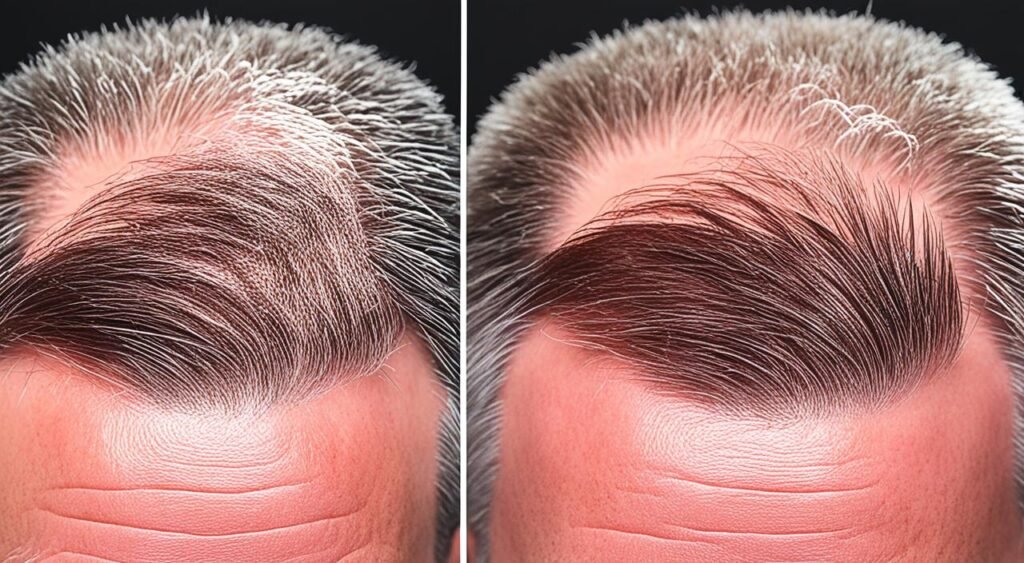
- Initial Consultation: Your journey begins with a meeting with your hair transplant specialist to assess your hair loss and discuss potential treatment options.
- Selecting the Technique: Depending on the assessment, you and your specialist will decide whether Follicular Unit Extraction (FUE) or Follicular Unit Transplantation (FUT) is more suitable for you.
- Preparation of Donor and Recipient Areas: Both the donor area (typically the back of the scalp) and recipient area are prepared for the procedure. This includes trimming hair in the donor area and marking the recipient area for implantation.
- Follicle Extraction: Hair follicles are meticulously extracted from the donor area with precision tools to ensure the integrity of each follicle.
- Follicle Preservation: The extracted follicles are preserved in a solution that maintains their viability before implantation.
- Implantation: The hair follicles are then carefully implanted into the recipient area according to the natural direction of your hair growth.
- Immediate Post-Operative Care: Once the implantation is complete, the scalp is cleaned and bandaged if necessary. You’ll be given specific aftercare instructions to follow.
- Final Review: You’ll have a follow-up appointment to review the transplant site and to ensure that the healing process is proceeding as expected.
Each of these steps are critical to the success of your hair transplant. A better understanding of this process can not only demystify the procedure but also help you anticipate and prepare for each phase, leading to a more comfortable and confident experience.
Hair Transplant Cost Analysis and Financing Options
When considering hair restoration strategies, understanding the hair transplant cost is essential. Various factors will impact the final price, such as the surgical technique used, the severity of hair loss, the number of sessions needed, and not least, the location of your chosen clinic. In this section, we’ll dive into a thorough cost analysis and explore financing hair transplant surgery to make it an affordable hair restoration option for you.
The financial aspect of hair transplantation can be daunting at first glance, but don’t let that deter you from achieving your hair restoration goals. Many clinics are sensitive to the needs of their patients, offering a range of financing options that can ease the burden. Let’s explore some of these options so you can find a financial route that suits your situation.
Remember, investing in your appearance and confidence through hair restoration is a lifelong decision. It’s worth exploring every avenue to find the most viable financial plan for you.
- Many clinics offer tiered pricing plans, allowing you to pay in installments.
- Credit options specifically tailored for medical expenses, including hair transplants, might be available to you.
- Some providers offer package deals, which include post-operation care and even travel accommodation for out-of-town patients.
- A comprehensive consultation with your clinic can reveal discounts or lower-cost options without sacrificing quality.
It’s important to approach this matter with a clear understanding of all potential costs and savings, drawing up a budget that aligns with your financial situation. By addressing the cost head-on, you can map out a plan that gets you one step closer to the hairline you’ve been longing for, in a way that respects both your personal and financial well-being.
Preparing for Your Hair Transplant Surgery
Embarking on your hair transplant journey starts well before the surgical procedure itself. A seamless experience and optimal results are rooted in thorough, precise preparation. Here’s how you can prep for your transformation.
Consultation and Planning
During the hair transplant consultation, anticipate an extensive review of your medical history and a holistic scalp assessment. Your surgeon will discuss your aesthetic goals, explore various strategies, and outline a customized treatment plan. This planning phase is pivotal to align expectations and pave the way for an effective procedure.
Pre-surgery Guidelines
In the run-up to your surgery, adhering to pre-surgery guidelines for hair transplantation is non-negotiable. Let’s look at some steps you should take:
- Avoid blood-thinning medications and supplements as advised by your surgeon to reduce the risk of bleeding.
- Refrain from smoking and consuming alcohol at least a week before the surgery to foster better healing.
- Do not cut your hair before the surgery; longer hair can help cover the post-operative area.
Always communicate with your surgeon if you have any concerns or are unclear about the preoperative instructions. Your diligence and cooperation are paramount for a successful hair transplantation outcome.
| Pre-Surgery Action | Reason | Timeframe Before Surgery |
|---|---|---|
| Avoid blood thinners | Minimize bleeding risk | As instructed by surgeon |
| Stop smoking | Promote healing | At least 1 week |
| Halt alcohol intake | Prevent swelling and bleeding | At least 1 week |
| Do not cut hair | Aids in covering surgical areas | 2 weeks to a month |
Hair Transplant Recovery and Aftercare
Embarking on your hair transplant recovery journey, it’s crucial for you to follow the aftercare instructions given by your clinic closely. The success of your hair transplant hinges not only on the skill of your surgeon but also on how you care for your scalp post-procedure. During the initial days following your surgery, you may experience some discomfort and swelling, which is perfectly normal. These symptoms are typically short-lived and will lessen considerably as the days progress.
Your commitment to post-hair transplant care is paramount. This involves gentle handling of your scalp and adhering to the recommended washing procedures. The aftercare guidance provided by your clinic will likely include tips on sleeping positions, activities to avoid, and specific hair care routines. It’s essential to abide by these guidelines to promote swift and proper healing, setting the stage for robust and natural-looking hair growth.
Remember, every detail in the hair transplant aftercare plan serves a purpose. From protecting your scalp from the sun to avoiding strenuous exercise, each recommendation is there to ensure you achieve the best possible results. Keep in touch with your clinic during your recovery, and never hesitate to reach out if you have questions or concerns. By taking the aftercare seriously, you enhance your chances of enjoying a seamless recovery and the full benefits of your hair restoration efforts.
